
[caption id="LondonBridgeJiveandRubySlippers_img1" align="aligncenter" width="223"]
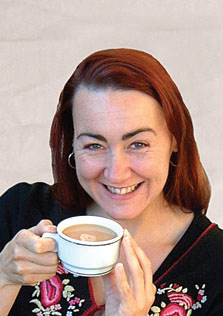
[caption id="LondonBridgeJiveandRubySlippers_img2" align="aligncenter" width="1024"]
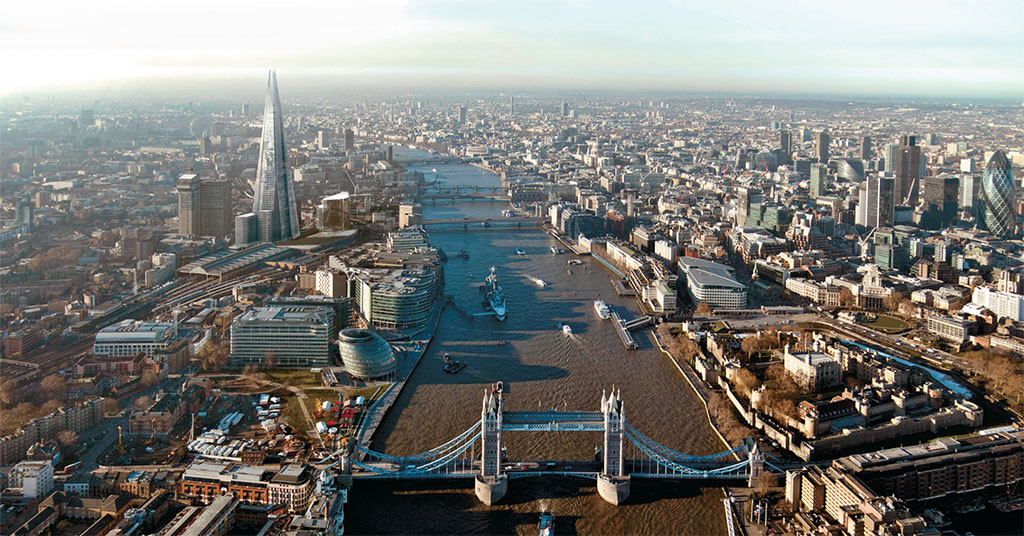
©THE VIEW FROM THE SHARD
LONDON BRIDGE IS AN AREA that’s traditionally been a bit down-at-heel. From medieval times when the outcasts from the City of London flocked to the stews of Southwark, through the playhouses and bear-pits of Elizabethan times to the dark underbelly of Dickens’s London, it’s always been a bit grotty. Even in recent times there have been times at night I’ve not been wild about walking alone through some of the alleys around Borough Market along the Thames. In shiny new, touristic London, however, there is little room for the old, dark lanes and the days of Southwark as an edgy district are retreating. I am not the only person mourning the soon-to-be-lost early Victorian railway buildings as a new station is built, but there are pluses to gentrification.
The most obvious is The Shard, that gigantic glass pyramid that you’ll no doubt have seen wherever you’ve been staying in London recently. You just can’t miss it. It’s not as tall as many New York skyscrapers, but it’s on its own, which makes it stand out up to 40 miles away. The decision was made early on to keep the very top as an observation area and, unlike virtually any other high place in London, the views truly are 360° as there’s nothing around it to get in the way.
When I went up there it was still under construction, so only the very highest indoor floor was open. It still had protective plastic covers on the floors and elevators and hadn’t been sealed yet so the wind howled through the cracks in the glass in a slightly alarming fashion, but one or two of the digital telescopes that will show enhanced views had been installed and the views were extraordinary. Eventually the floor above this will also be open—a strange, open-air platform where the “shards” of glass literally meet at the top. As a recovering vertigo-sufferer I had no issue at all with the heights indoors; whether I will be able to say the same for the real summit only time will tell.
What’s great about the Shard is the difference in aspect from, say, the London Eye. Whereas the Eye is great for the Houses of Parliament and the West End, the Shard’s further east, so you get an almost overhead view of the Tower of London and the City, St Paul’s Cathedral and Tower Bridge. What’s not so great is the price—a hefty £24.99 for adults. Not that this seems to have put people off; the attraction is booking heavily. Naturally, the first day to sell out was February 14th.
ANOTHER PLUS for trendy “new” London Bridge is the Menier Chocolate Factory, which, in my opinion, is one of the best-value theaters around. They’re so used to transferring shows to the West End, and even Broadway (A Little Night Music, with Catherine Zeta Jones and Elaine Stritch, started at the Menier) that they build-in the stars and production values from the start. Happily the intimacy and the fringe prices remain. The latest offering is the Edwardian chestnut Charley’s Aunt, which has been given a perky re-working with Jane Asher as Charley’s real aunt. Of course the fake aunt is the main attraction and “she’s” played in a charming, breathless, manner by TV comic Matthew Horne. If the humor of a 100-year-old play creaks just a little round the edges, it’s not for want of acting talent, but it’s still a frothy, fun night out and if it doesn’t transfer to the West End, I’ll eat my lace bonnet. A word of advice for anyone planning to visit: look out for Meal Deal tickets, clearly marked if you book online. Tony and I paid £39 each for excellent seats and a thoroughly enjoyable pre-show meal in a restaurant I’d go to even if I wasn’t visiting the theater.
Costumes for Charley’s Aunt were nice but nothing along the lines of the V&A’s latest offering. As soon as I heard that the V&A were planning an exhibition of Hollywood Costume I knew I had to go. I’m still not sure quite how they managed to persuade dozens of private collectors to part with, even on a temporary basis, costumes worn by everyone from Charlie Chaplin to Judy Garland, George Clooney to Meryl Streep, Marilyn Monroe to Robert de Niro but I am still awed by the sheer size and breadth of the result. Because the two curators, Sir Christopher Frayling and Deborah Nandoolman Landis (best known for designing Indy’s hat-and-whip ensemble for Raiders of the Lost Ark, Michael’s jacket-and-glove combo for Thriller, and Jake and Elwoods’ shades-and-tie shebang for The Blues Brothers) know their subject on such an intimate basis this is no “here’s the kit so-and-so-wore in blah-de-blah” rip-off, but an in-depth exploration of the mechanics of Hollywood dress.
The costumes are displayed on “invisible” mannequins, in action pose, complete with back projections and videos that explain how, for instance, Indiana Jones’s famous felt hat has a deep crown to minimize Ford’s high brow, a narrow front brim to avoid his eyes being caught in shadow and was sat on by practically every member of the cast and crew the night before shooting to give it that “lived-in” look. It’s detail like that that makes this show a triumph of educational discourse, cinematic analysis and studio tittle-tattle.
I spent a long time in the large first gallery with Scarlet O’Hara and the cast of Oceans Eleven and I’d have been happy with that: plenty of famous costumes and mouthwatering shimmer. The second gallery was, therefore, a bit of a surprise with even more depth, more famous costumes and more glamour. But nothing prepared me for the gigantic third room, filled from ceiling to floor (look up for superheroes such as Batman and Catgirl, down for the Ruby Slippers), which even Sir Christopher Frayling admits was designed to stop the show. Tickets are at a premium so costume-junkies planning to come over solely to witness this once-in-a-lifetime extravaganza should probably book an exhibition ticket before the plane.
All that Hollywood hoofing had Tony and me itching to dance and we decided to take a jive class at the newly-refurbished Bishopsgate Institute near Liverpool Street station. I’d been to many history-based lunchtime lectures at this gorgeous Edwardian educational establishment, built in a time when intricate mosaics and brass fittings were de-rigueur in such places, but not a movement class.We had such fun we immediately booked another set of six. Courses are open to all, and there are single-day as well as longer events.
One such was the London Ghost Conference, my attendance of which incited sundry witty comments from pals. But I had the last maniacal laugh, it was huge fun. A day of talks about the spectres and monsters in one of the world’s most haunted cities, there was a refreshing mix of sceptics and true believers, ranging from the chairman of the Ghost Club (Charles Dickens, Arthur Conan-Doyle and W.B. Yeats were members) to a chap from the British Film Institute who was using the event as an excuse to dig out old horror movies filmed in Highgate Cemetery. Who knows what the Bishopsgate Institute will be doing next, but you can guarantee they will have something interesting going on, whether it’s wine-appreciation or a talk on Victorian omnibuses.
THIS MONTH’S CONTACTS
[caption id="LondonBridgeJiveandRubySlippers_img3" align="alignleft" width="641"]
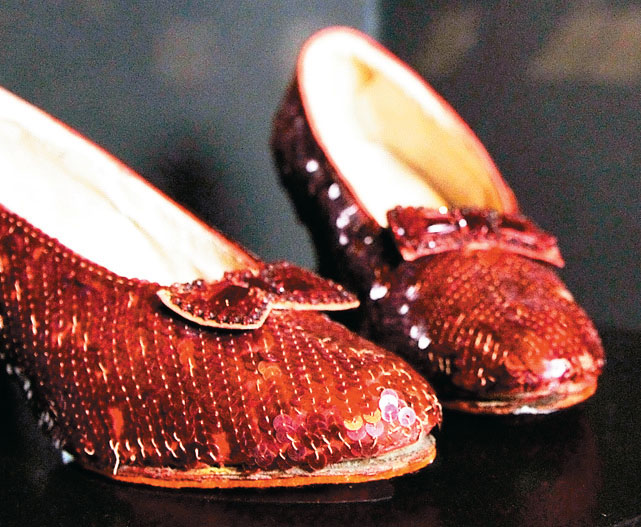
©V&A IMAGES
The View from the Shard
www.theviewfromtheshard.com
Menier Chocolate Factory
www.menierchocolatefactory.com
Hollywood Costume
www.vam.ac.uk
Bishopsgate Institute
www.bishopsgate.org.uk
Ace Café
www.ace-cafe-london.com
TALKING OF INTERESTING, I finally got to visit the historic Ace Café on the old North Circular road near Wembley. Built in 1938, bombed in the war and rebuilt in the 1949, it is a classic “transport caff” that has a history as checkered as its décor. It was notorious in the ’50s for the Ton-Up Boys—young, leather-clad motorcyclists and became a bastion for rockers in the 1960s. When it closed in 1969 there was an outcry and the campaign to get it reopened was long and noisy. “Rocker Reunion” runs attracted 12,000 people. This 20th-century institution finally reopened in 1997. It’s now a Mecca for bikers, rockers and curious people like myself who enjoy motorbikes, rock&roll, a chromium atmosphere and a walloping good British fry-up.
I went with my pal Timandra to witness a blue plaque being unveiled to Britain’s oddest politician, the late Screaming Lord Sutch of the Monster Raving Loony Party. David Edward Sutch started out as a wild rock & roll performer in the 1960s, with a peculiar stage act that involved coffins, skulls and a lot of screaming, but became much better known as the ‘also-ran’ in pretty much every election and bi-election in Britain in the 1980s and ’90s. Dressed in a mad top hat, loud jacket and massive rosette, he was the guy you could vote for if you were disgusted by all the other candidates. I’m not aware that he ever kept his election deposit, but he often received more votes than he should have done. Sutch was part of the campaign to re-open the Ace Café and it is a mark of the eccentricity of British politics that the incumbent Mayor of Brent was keen to be seen unveiling a plaque to Sutch’s memory on the side of a greasy spoon café that was once notorious for its distinctly anti-establishment clientele.
Next time, I’m off in search of an original 1930s ballroom to practice my new-found jive moves, attending a traditional Victorian Music Hall in an unchanged, 150- year-old theatre and having afternoon tea with my sister in Mayfair.

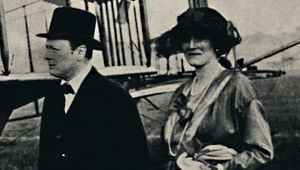
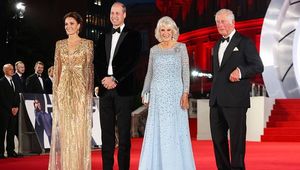
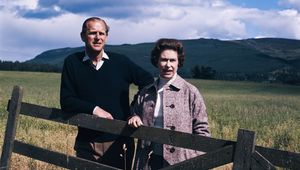
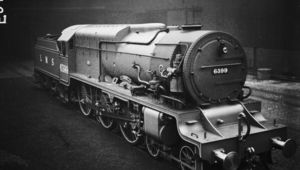
Comments